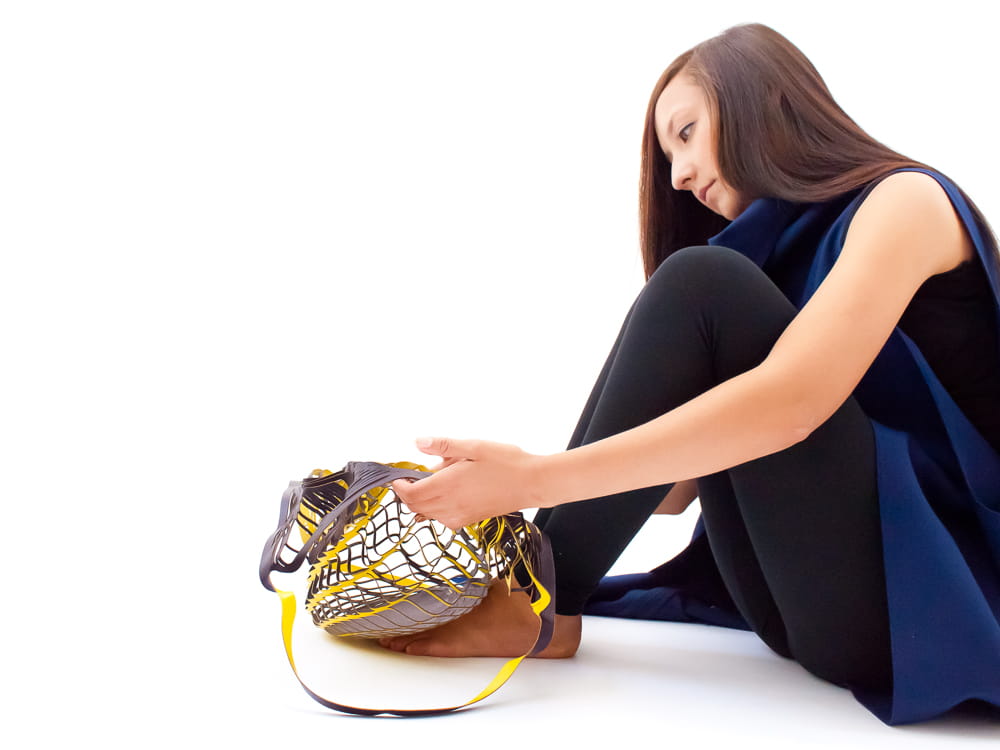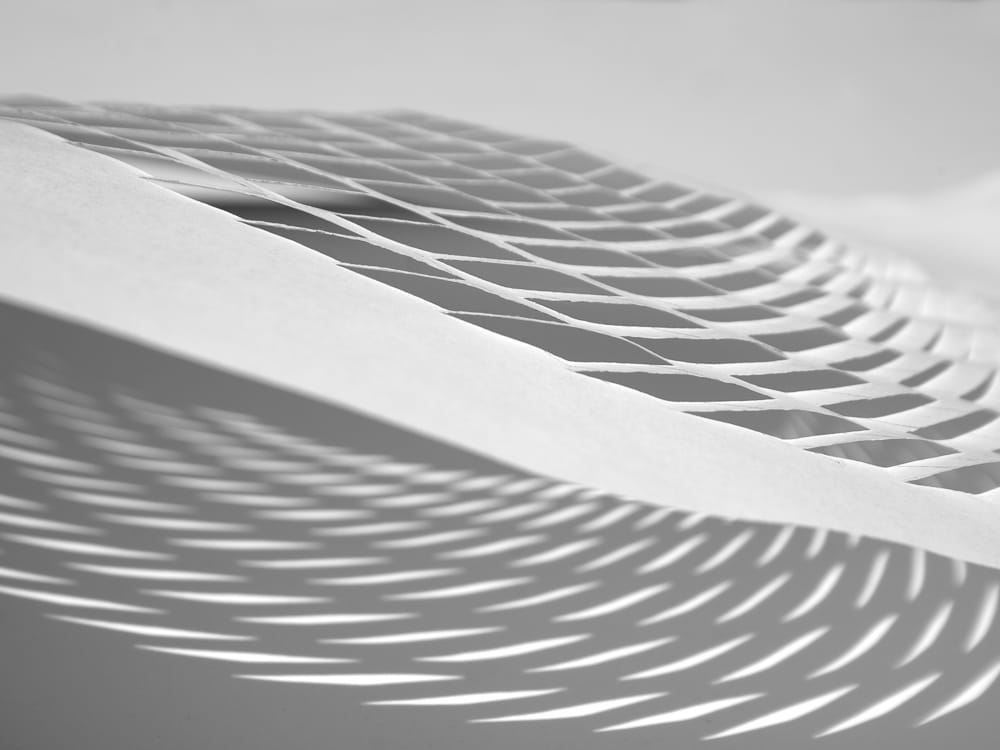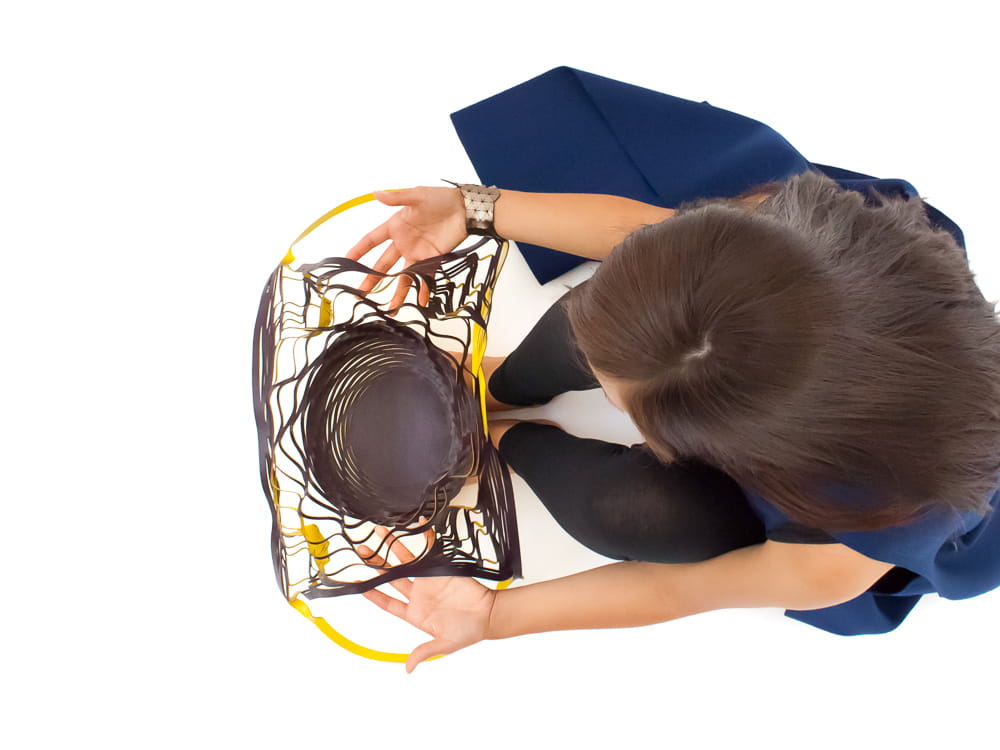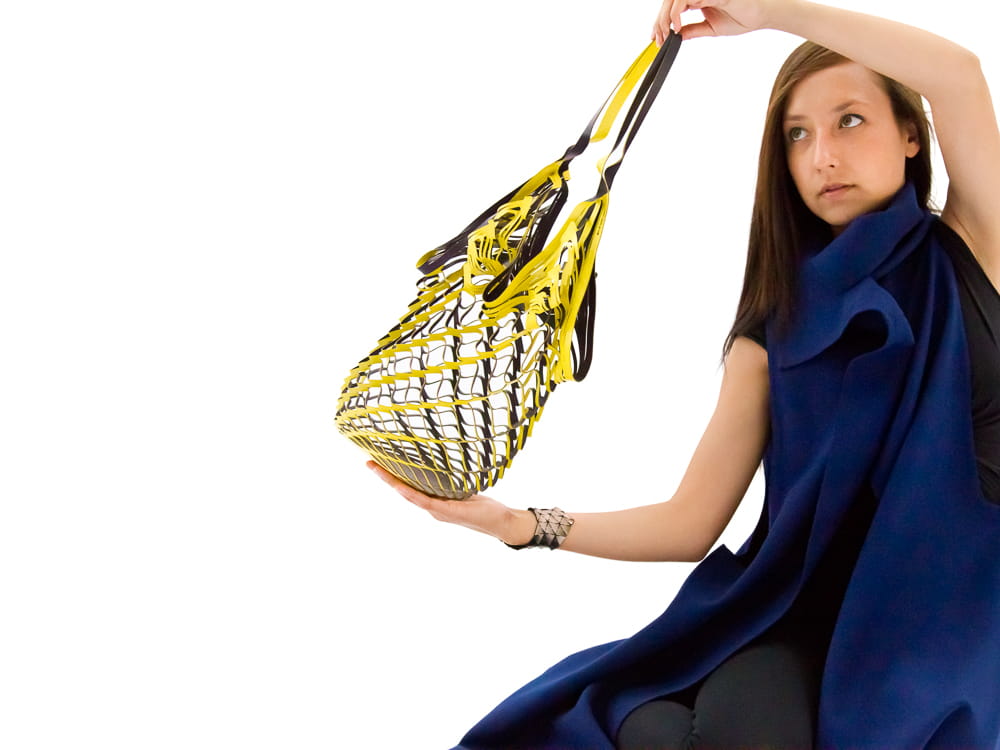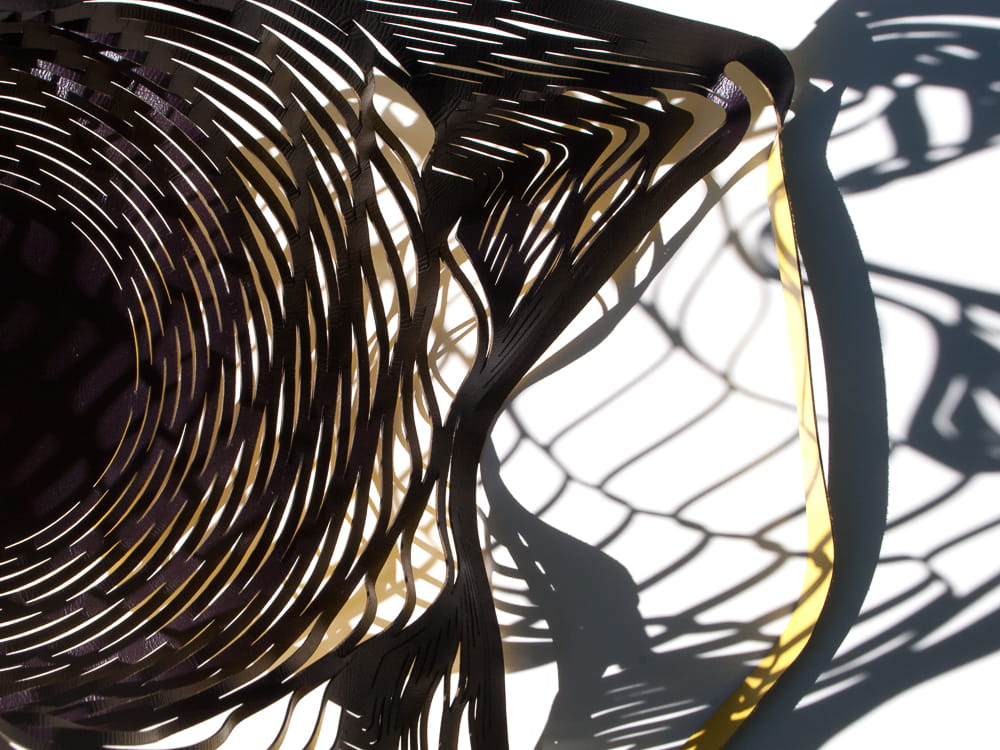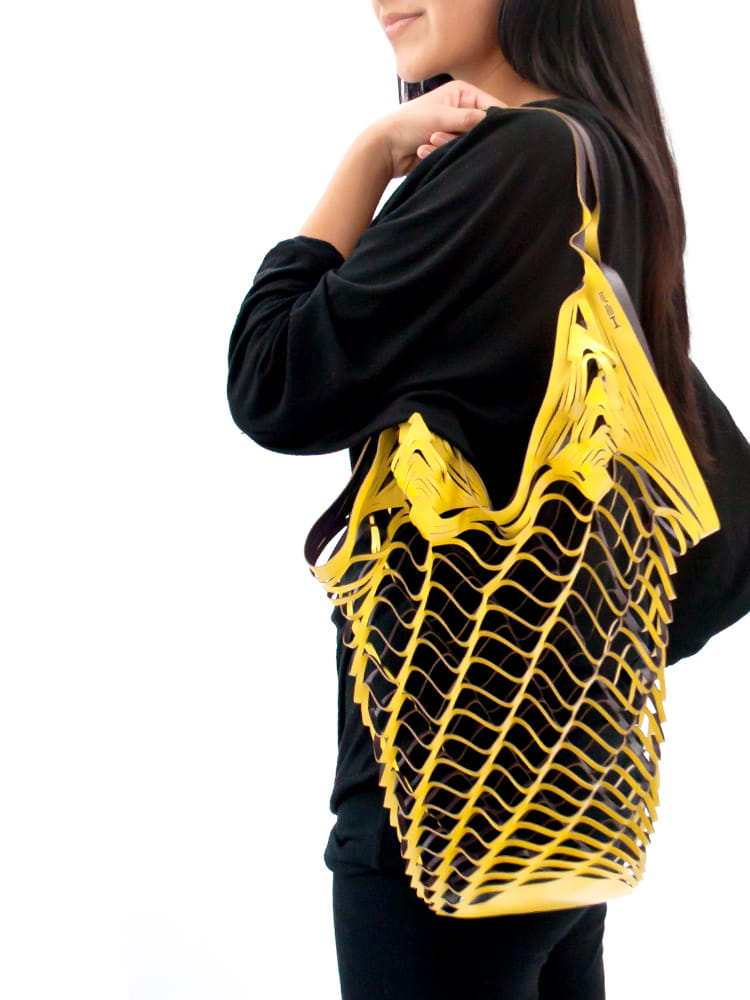Butterfly Bag
2012-2013
Designed for easy visual access to personal items sometimes hidden at the bottom of the purse, the Butterfly Bag is laser cut out of a single continuous piece of leather and transformed into a three-dimensional net as it is lifted and loaded with personal objects. Butterfly Metal expands up to a simple oval shape; Butterfly Matte has a lacy complex look at the base of the strap.
The expanded net design was based on a typology of market totes of unknown origin but seen in multiple cultures. The redesign of the tote is inspired by the nanostructure within the scales of the butterfly’s wings. The nanostructure can reflect separate iridescent signals of colors that can be seen in different directions. The effects of butterfly’s wing structure have been researched, emulated, and applied by many industries, including but not limited to cosmetic, automotive, textile, security/anti-counterfeiting, and solar panel industries. Like the change of color in a butterfly’s wings, the Butterfly Bag’s topological transformation involves changes in overall geometry, opening densities, and material directions, allowing it to reflect and blend colors both inside and outside.
During the design process, no simulation software was known nor accessible to us to predict the behavior of the cut patterns under specified loads. As a result, physically verifying them using paper was the closest we could get to a simulation. Special thanks to Charles Ghiotto, who was deeply involved in every design iteration and meticulously hand-cut all the test pieces; a fraction of those tests are shown below.





